#les incorruptibles
Explore tagged Tumblr posts
Text
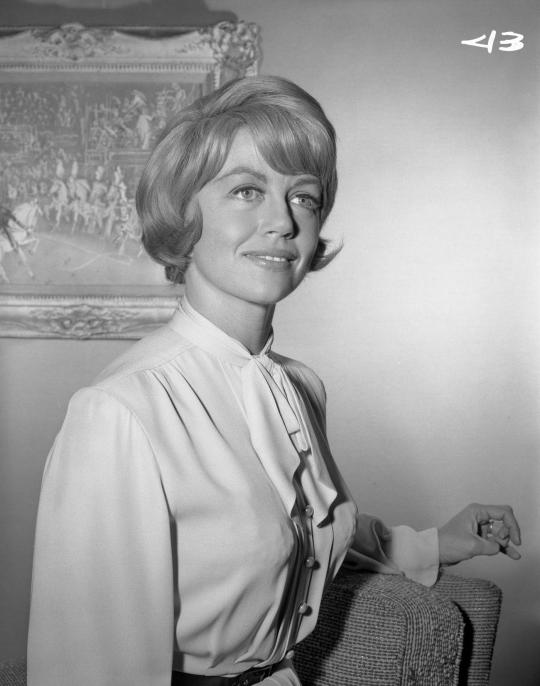
Dorothy dans "Les incorruptibles".
0 notes
Text
"Love participates of the soul itself. It is of the same nature. Like it, it is the divine spark; like it, it is incorruptible, indivisible, imperishable. It is a point of fire that exists within us, which is immortal and infinite, which nothing can confine, and which nothing can extinguish. We feel it burning even to the very marrow of our bones, and we see it beaming in the very depths of heaven."
— Victor Hugo, Les Misérables IV.V.IV
#Les Misérables#Les Miserables#les mis#love#romance#quotes#Victor Hugo#the brick#hapgood#classics#literature#Your yandere#marius pontmercy
27 notes
·
View notes
Text

When you get publicly slapped by 4 surrealist poets because you insulted a guy's historical crush
(translation and context under the cut)
Gallantly Defending Robespierre’s Honour
In the conservative daily paper, Le Gaulois, on March 3, 1923, the journalist and man of letters, Wieland Mayr, expressed his pleasure: there would not be, he wrote, a "vile apotheosis" for "that holy scoundrel" Robespierre. On the other hand, Mathiez had the Surrealists with him. Following the article in Le Gaulois, Robert Desnos (1), accompanied by Paul Éluard (2), Max Ernst (3), and André Breton (4), summoned Mayr in a café and publicly slapped him for insulting the memory of "the Incorruptible."
Why did Mayr get Slapped?
In short: studying history in the 1920s was a messy business, especially when it came to the French Revolution….
To explain why Mayr ended up getting slapped, please allow me to briefly dive into the French Revolution's historiography during the late 19th and early 20th centuries. Keep in mind, that this is a grossly oversimplified version.
Before 1848, it was pretty standard for French republicans to proudly see themselves as inheritors of Robespierre’s legacy. (If you’ve ever wondered why in Les Misérables, Enjolras’ character is very much channeling Robespierre and Saint-Just, here’s your answer!) However, things start to change with the Second Republic.
In 1847, Jules Michelet brought back the negative portrayal of Robespierre as a tyrannical "priest" and leader of a new cult. This narrative helped fuel an increasing dislike for Robespierre, with radicals like Auguste Blanqui arguing that the real revolutionaries were the atheistic Hébertists, not the Robespierrists.
Jump to the Third Republic, and the negative sentiment towards Robespierre was only getting stronger, driven by voices like Hippolyte Taine, who painted Robespierre as a mediocre figure, overwhelmed by his role. This trend was politically motivated, aiming to reshape the Revolution's legacy to align with the Third Republic's secular values. Obviously, Robespierre, the "fanatic pontiff" of the Supreme Being, didn’t quite fit this revised narrative and was made out to be the villain. Alphonse Aulard (a historian willing to stretch the truth to make his point) continued pushing Danton as the face of secular republicanism. Albert Mathiez, one of Aulard’s students, was not having any of it and strongly disagreed with his mentor’s approach.
The general disdain for Robespierre began to shift after World War I. One reason was that people could better appreciate the actions of the Revolutionary Government after experiencing the repression during the war themselves. Albert Mathiez and his colleagues were actively working to change Robespierre's tarnished image. With tensions high, it's no wonder Mayr ended up being publicly slapped by a bunch of poets who were defending the Incorruptible's honour!
Notes
Robert Desnos (1900-1945) was a French poet deeply associated with the Surrealist movement, known for his revolutionary contributions to both poetry and resistance during World War II.
Paul Éluard (1895-1952) was a French poet and one of the founding members of the Surrealist movement, celebrated for his lyrical and passionate writings on love and liberty.
Max Ernst (1891-1976) was a German painter, sculptor, graphic artist, and poet, a pioneering figure in the Dada and Surrealist movements known for his inventive use of collage and exploration of the unconscious.
André Breton (1896-1966) was a French writer, poet, and anti-fascist, best known as the principal founder and leading theorist of Surrealism, promoting the liberation of the human mind.
Source: The text in the picture comes from Robespierre and the Social Republic by Albert Mathiez
88 notes
·
View notes
Text
I saw my friend took pictures of this play apparently now ongoing in Paris and I had to search it up
LE DÎNER DE- WHAT???
So Robespierre is not a character in the play, but rather there are these characters who must dress up as a figure from the French Revolution...

Also there's Camille (middle) and presumably Marie Antoinette on the right

Summary:
Dans une petite ville de province, un groupe d’amis de la bonne société se donne rendez-vous pour un « dîner de têtes ». Chacun doit se faire la tête d’un grand personnage de la Révolution française. André Bitos, fils du peuple devenu magistrat incorruptible et vertueux, est l’invité d’honneur : il jouera Robespierre. Mais il semble que l’objectif de cette soirée ne soit pas uniquement de refaire l’histoire de France... Cette bande de notables en smoking-perruque va se lancer dans un jeu de massacre aussi cruel que jubilatoire. Drôle, grinçant et terriblement actuel, ce chef d’œuvre d’intelligence renvoie dos à dos haine de l’Autre et tyrannie de la Vertu.
"In a small provincial town, a group of friends from high society meet for a dinner of heads. Each must reimagine themselves as a great figure from the French Revolution. André Bitos, son of the people who became an incorruptible and virtuous magistrate, is the guest of honour: he will play Robespierre. But it seems that the goal of tonight was not to only reenact the history of France...This band of notables in their tuxedo-wigs are heading into a game of massacre as cruel as it is exhilarating. Funny, grating, and terribly current, this intelligent masterpiece brings back to back the hatred of the Other and tyranny of Virtue."
Okay HMMMM from the wording of that it sounds like it's not gonna be the most redeeming or best depiction of Robespierre or the Revolution in general. From the website it seems to be connecting the "Terror" with post-WWII France "purge"? (l'épuration, from the wording on the website) .....I am not knowledgeable in WWII France but I am a bit on the fence for that.....
BUT heyyyyy look at that Camille


The height BRUH
61 notes
·
View notes
Text
The political career of the revolutionary Antonelle Pierre-Antoine, close to Felix Lepeletier

Presumed portrait of Pierre Antoine Antonelle
This revolutionary was born in Arles in 1747. As a marquis, he published between 1788 and 1789 "le Catéchisme du Tiers État, à l’usage de toutes les provinces de France, et spécialement de la Provence ." He did not succeed as an officer, due to a lack of both will and ability. Instead, he preferred reading philosophy and mathematics treatises, according to Pierre Serna. He managed to become the first mayor of Arles in 1790.
Antonelle founded a Jacobin society, affiliated with Paris, and opposed Monseigneur de Lau (who was killed during the September massacres). Antonelle supported the common people, while Monseigneur de Lau, despite being attracted to Enlightenment ideas, opposed the Civil Constitution of the Clergy. Antonelle was elected to the Legislative Assembly in 1791 and became a legislative commissioner for the Army of the Center in 1792.
In the autumn of 1792, he gained further importance by being elected as a juror at the Revolutionary Tribunal. He was apparently an alternate who did not participate in Marie Antoinette's trial. Contrary to what Wikipedia claims, he was harsh with Marie Antoinette, although he did not believe the infamous rumors about her son. According to Pierre Serna, Antonelle acted this way because, in his view, one could not build a new world on the revolution without destroying the old roots of the Ancien Régime. However, he declared himself insufficiently informed during the trial of the Girondins. He was imprisoned in May 1794 but was released immediately after the 9th Thermidor.
The Directory was a great disappointment for Antonelle. While Robespierre was nicknamed "the Incorruptible," Antonelle was called "the Invariable," according to Pierre Serna. He maintained a lifelong friendship with Felix Lepeletier, despite a later divergence between them. Involved in the Conspiracy of Equals, he was tried during the Babouvist trial. Apparently, one of the reasons many were spared (except Darthé and Babeuf) was due to Antonelle's strategy. Here is an excerpt from Pierre Serna: "He participated in the Vendôme trial against Babeuf’s accomplices and played a key role in saving almost all of the defendants." According to Serna, for Antonelle, there should be no more martyrs, or at least no more forced uprisings of this kind. He believed in fighting the Directory from within, through elections.
He helped the majority of the Directory's directors on the eve of the coup d'état of 18 Fructidor, Year V, by publishing the newspaper Le Démocrate Constitutionnel to call on the suburbs to fight against the royalists. His election to the Council of Five Hundred in 1799 was annulled due to irregularities, namely his affiliation with the Jacobins.
He quickly sensed the danger of Bonaparte, as it matched the fears of a general too ambitious, who would definitively end the Revolution. The consequences of the Saint-Nicaise Street attack and the terrible repression of the Jacobins led to his expulsion from France. Later, when he returned to France, he was placed under surveillance, although he fared better than his friend Felix Lepeletier, who was temporarily deported. Other Jacobins were executed in what was, in Antonelle’s view, an even worse parody of justice than under the First Republic (particularly because of the use of torture). Many other Jacobins were deported, and half of them died in exile.
He lived in retirement in Arles, continuing his philanthropic activities, becoming beloved by the local population for his generous donations. Despite his reputation as a "priest-eater," he gave large sums of money to nuns in the Church so they could care for the poor. This reputation later saved his life. Antonelle had a political divergence with his friend Lepeletier. In fact, he rallied to the Restoration in 1814 in opposition to Bonaparte and published Le dernier rêve d’un vieillard . He accepted the restoration of Louis XVIII under one condition: that he respects civil equality, equal access to jobs for all, and civil liberties. This was criticized, but honestly, he had to choose between two monarchs (as the return of the monarchy was sealed the day Bonaparte crowned himself, let's not delude ourselves), one of whom had betrayed his entire political circle, executed many, caused a large number of deaths, and rolled back many achievements shortly after his coup d'état while proclaiming himself the savior of the Revolution. In comparison, one could criticize Louis XVIII, but he seemed more reasonable (we cannot say the same of Charles X, who had as much honor as he had intelligence, meaning none at all). I don't blame those who chose Bonaparte either, as they were desperate not to return under the Bourbons' yoke (it must have been a terrible dilemma for all honest republicans to choose between Bonaparte and Louis XVIII).
During the Second Restoration, he was hunted by royalists in Arles. However, being highly esteemed by the local population, especially the farmers , they hid him out of gratitude for his generosity toward them (according to Pierre Serna, the farmers owed a large debt to Antonelle, which he forget the debt after they saved his life).
Having inherited a significant fortune, he gave generously to the people of Arles, who only loved him more for it. When he died in 1817, a massive crowd reportedly attended his funeral. Here is another excerpt from Serna: "His burial led to a popular riot when the clergy refused to give him the last rites, provoking the anger of the common people of Arles. Even in death, Antonelle remained controversial."
In Arles, at 30 Rue de la Roquette, there is a hotel bearing his name, with a plaque in his honor.
Sources: Pierre Serna Jean Dautry
#frev#french revolution#napoleon#napoleonic era#the directory#noble revolutionaries#babeuf#babouvism
28 notes
·
View notes
Text
Frev nicknames compilation
Maximilien Robespierre – the Incorruptible (first used by Fréron, and then Desmoulins, in 1790).
Augustin Robespierre – Bonbon, by Antoine Buissart (1, 2), Régis Deshorties and Élisabeth Lebas. Élisabeth confirmed this nickname came from Augustin’s middlename Bon.
Charlotte Robespierre – Charlotte Carraut (hid under said name at the time of her arrest, also kept it afterwards according to Élisabeth Lebas). Caroline Delaroche (according to Laignelot in 1825, an anonymous doctor in 1849 and Pierre Joigneaux in 1908).
Louis Antoine Saint-Just – Florelle (by himself), Monsieur le Chevalier de Saint-Just (by Salle and Desmoulins)
Jean-Paul Marat – the Friend of the People (l’Ami du Peuple) (self-given since 1789, when he started his journal with the same name)
Georges-Jacques Danton – Marius (by Fréron and Lucile Desmoulins).
Éléonore Duplay – Cornélie (according to the memoirs of Charlotte Robespierre and Paul Barras. Barras also adds that Danton jokingly called Éléonore “Cornelie Copeau, the Cornelie that is not the mother of Gracchus”)
Élisabeth Duplay – Babet (by Robespierre and Philippe Lebas in her memoirs)
Jacques Maurice Duplay – my little friend (by Robespierre), our little patriot (by Robespierre)
Camille Desmoulins – Camille (given by contemporaries since 1790. Most likely a play on the Roman emperor Camillus who saved Rome from Brennus in the 4th century like Camille saved the revolution on July 12, and not a reference to Camille behaving like a manchild to the people around him like is commonly stated.) Loup (wolf) by Fréron and Lucile (1, 2), Loup-loup by Fréron (1, 2), Monsieur Hon by Lucile.
Lucile Desmoulins – Loulou (by Camille 1, 2), Loup by Camille, Lolotte (by Camille (1, 2), Rouleau by Fréron (1, 2) and Camille, the chaste Diana (by Fréron), Bouli-Boula by Fréron (1, 2).
Horace Desmoulins – little lizard (Camille), little wolf (Ricord), baby bunny (Fréron).
Annette Duplessis (Lucile’s mother) — Melpomène (by Fréron), Daronne (by Camille)
Stanislas Fréron – Lapin (bunny) (by himself (1, 2, 3, 4, 5) and Lucile. According to Marcellin Matton, publisher of the Desmoulins correspondence and friend of Lucile’s mother and sister, Fréron obtained this nickname from playing with the bunnies at Lucile’s parents country house everytime he visited there, and Lucile was the one who came up with it). Martin by Camille and himself (likely a reference to the drawing ”Martin Fréron mobbed by Voltaire” which depicts Fréron’s father Élie Fréron as a donkey called ”Martin F”.)
Manon Roland — Sophie (by herself in a letter to Buzot).
Charles Barbaroux — Nysus by Manon Roland
François Buzot — Euryale by Manon Roland
Pierre Jacques Duplain — Saturne (by Fréron)
Guillaume Brune — Patagon (by Fréron)
Antoine Buissart (Robespierre’s pretend dad from Arras) — Baromètre (due to his interest in science)
Comment who had the best/worse nickname!
#french revolution#robespierre#danton#desmoulins#buzot#barbaroux#marat#fréron#maximilien robespierre#charlotte robespierre#augustin robespierre#camille desmoulins#lucile desmoulins#horace desmoulins#stanislas fréron#georges danton#manon roland#saint-just#louis antoine de saint just#élisabeth lebas#élisabeth duplay#éléonore duplay#fréron really likes nicknames…#frev compilation
165 notes
·
View notes
Text
Ladies and gentlemen, it’s official! I’m writing a musical!
For those of you in the community who have known me for a while, this is nothing new, but I’ve been working on it for quite awhile, so I finally want to unveil what I have so far.
The show is officially called “Tyrant! The Story of Robespierre” or just “Tyrant!” for short, and here’s my first concept for the album cover below!
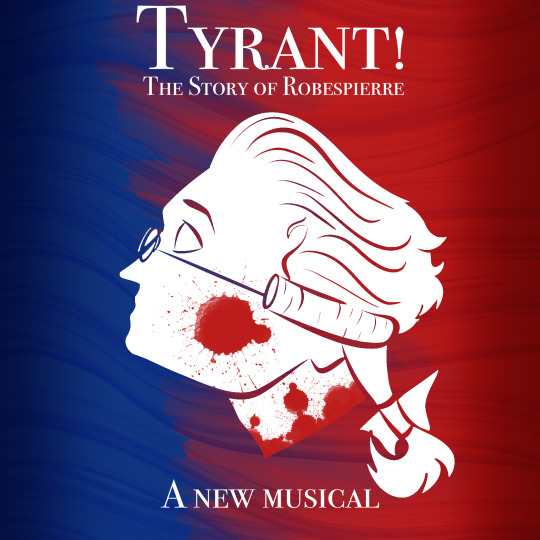
As for the actual story and songs, right now I’m planning on having 16 songs per act, and I’ll format the songs I’ve written or am currently in the process of writing!
Italic = work in progress
Bold = fully written
With that being said, this is the song catalogue and all I’ve gotten done so far!
Act 1:
Tyrant! (Show opener) - immediately after his death
Address for the King - early childhood
Never shall we part - transition from childhood to adulthood, meets Camille
Song addressed to Miss Henriette - young adulthood
And So I Reminisce - trio song for the siblings
He Just Can’t Stop - lawyer career in Arras
Let Us Speak/We Swear - Estates general + tennis court oath
Camille’s Address (Bring It Down) - Storming of the bastille
Hey Ladies! (Theroigne’s song + Women’s March on Versailles)
Bienvenue aux Jacobins - Joins the Jacobin club and meets Danton, gets elected president of the club
Never shall we part (1st reprise) - Camille’s marriage to Lucile
Escape (Louis + Marie flee Paris, Champ de Mars massacre)
There’s Safety Here (Robespierre meets Maurice Duplay, moves into the Duplay house)
This Means War! (Speeches against the war and Brissotins, war gets declared anyways)
The Tuileries Tango (Storming of the Tuileries and overthrow of the monarchy)
Liberté, Egalité, Fraternité For All (Establishment of the republic, Robespierre at his height, his big “I want” song)
Act 2:
Incorruptible (Saint-Just’s debut and Robespierre’s election to the National convention)
So Ends the Reign of Tyranny (Louis’ trial and execution)
Bienvenue aux committee/ Bienvenue le Jacobins (reprise) (Appointment to the CPS)
Choose Your Side/And So I Reminisce (reprise) (Charlotte and Augustine’s fight, fracture in the family, duet with Élèonore, PLATONIC, NOT ROMANTIC)
Principio Ad Finem/ A late night’s walk (“darker” ‘I want’ song, NOT A VILLAIN SONG )
What is he doing? (Camille publishes his paper and says stupid stuff)
Never Shall We Part (2nd and 3rd reprises) (Max and SJ duet, Camille’s denouncement from friends to enemies)
A Meeting/Make Him a Monster (CPS meeting, Thermidorian villain song)
You’re Unwell (Eleonore and SJ duet, Max falls ill/ slowly loosing his sanity)
So Ends the Reign of Tyranny/ Liberté, Egalité, Fraternité for All (reprise) (Arrests and executions of Camille, Danton and their followers, closest thing to a villain song for Robespierre)
This Glorious Day (Festival of the Supreme Being, more Thermidorian conspiring)
Principio Ad Finem (reprise) (Max writes his 8 Thermidor speech)
My Final Bow (8 Thermidor speeches for the convention and the Jacobins)
We Swear/Let Me Speak! (9 Thermidor denouncement and arrest)
Requiem (Hotel De Ville siege, bullet to the jaw, death, 11th hour power ballad)
May You Ne’er Be Forgotten (basically charlotte’s ‘who lives who dies who tells your story’, her 11th hour power ballad, grand finale of the show)
I know that was a lot thrown at y’all, and obviously I’ve still got a long ways to go, but I’ll be working hard at it all summer, and I hope to have at least half of the first act finished by the end of this summer! I’ll keep working on asks too now that my schedule’s freed up, but I thought it’d be a fun announcement to share with all of you for Max’s birthday, and I can’t wait for you to see the rest of it! Love you all! ❤️❤️❤️
-Syd
320 notes
·
View notes
Text
I actually looked at other people's Doomguy builds for WOTR before playing it, and most of them sucked because they suggested going with the demon mythic path into legend. Demon to legend is a great redemption arc, don't get me wrong, but did these people miss the part where Doomguy is supposed to be incorruptible?
"But he's le really angry, so demon fits him!"
Doomguy's rage is righteous in nature. His rage comes from seeing the innocent suffer at the claws of demons. Demonic rage is pointless and evil. Angel to legend makes way more sense for his character.
“They are rage, brutal, without mercy. But you. You will be worse."
21 notes
·
View notes
Note
Okay, so the next time Marvel retools its continuity, Steve Rogers has to be né Stephen Rothkowitz, son of Russian Jewish immigrants on the LES, right?
That's a very interesting question!
The first thing I'd note is that Marvel doesn't really retool its continuity per se, that's more of a D.C thing. Indeed, Marvel kind of takes pride in the fact that the main continuity of the 616 has never been formally rebooted, that while the plates may have wobbled from time to time they've managed to keep them spinning since 1961.

Leaving aside that bit of pedantry, I think the question of whether or not to have Steve Rogers be retconned as Jewish is a very interesting one - and I think it ultimately comes down to what kind of message or theme one is trying to convey through comics. When Siegel and Shuster decided to bolt a Moses allegory onto their reclamation of the Nietzschean Ubermensch, that was a statement to the Nazis of the world: the ubermensch was a Jew.

As I've said before, Jack Kirby and Joe Simon were on to something a bit more complex than Superman when it came to Steve Rogers. To quote myself:
In a deliberate thumb in the eye to Hitler’s racial science, Steve Rogers is turned from a malnourished working-class intellectual into the very image of the Aryan Superman Hitler fetishized by a Jewish refugee scientist – alternately named Joseph Reinstein or Abraham Erskine – who is then gunned down by a Nazi agent.[3]
Pre-serum Steve Rogers stands in for many things that Hitler hated and wanted to purge from society - he's the "degenerate" "cosmopolitan" artist/intellectual, he's physically disabled and absolutely would be labeled as "undesirable" under the "Law for the Prevention of Hereditarily Diseased Offspring," he's a working-class premature anti-fascist (i.e, he's a "red"), he's a second-generation immigrant from the Lower East Side - so the question naturally arises, is he also a Jew?
I think it's a bit complicated. Certainly, as I've written about before, subtextual Judaism is all over Steve Rogers' origin story. In addition to the immigrant LES backstory, there's also the fact that Rogers' transformation into Captain America is absolutely depicted as the work of Jewish emigre science. To quote myself again:
So in 1941, when Jack Kirby and Joe Simon introduced us to Captain America and the name of the scientist who gave him his powers was Professor Reinstein at a time when the most famous Jewish emigre scientist in the world was Albert Einstein, the subtext was clear: Captain America’s serum is the result of Jewish emigre science, here to save us from the threat of Nazism. And while it’s changed somewhat in the last 60-70 years, the fact that the 2011 film has Doctor Abraham Erskine be both a scientist and a quasi-rabbinical figure, the subtext is still there.
I think there's something very deliberate in Kirby and Simon's choice to have Steve Rogers be transformed into a blond-haired, blue-eyed ubermensch, the very ideal of Nazi eugenics but one absolutely dedicated to a political ideology that's anathema to Nazism. In that context, it might be argued that having Steve Rogers be Catholic rather than Jewish might be a useful part of the analogy rather than just subtextual cover - he's the Popular Front cross-ethnic coalition, he's the example of righteousness among the goyim to inspire other goyim to take up the cause of anti-Nazism.
There's also a reading of the text that both points to the subtextual Judaism of Rogers' origin but also why Rogers is in Judaism but not of it - the rather common reading that Captain America is a golem. As I've said, Reinstein/Erskine is a quasi-Rabbinical figure, endowed both with higher learning (the super-science formula that is lost with his murder so that there is only one Captain America) and moral authority, who creates an incorruptible force for good to defend America and its Jewish commuunity from the evils of Nazism.
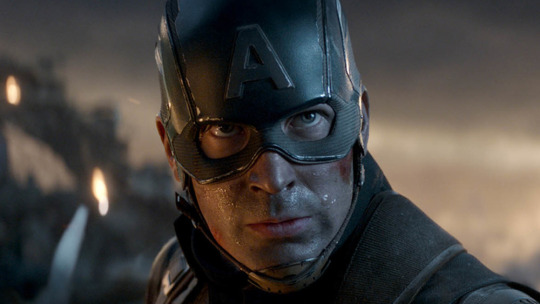
As Captain America, Rogers bears a letter A on his forehead that is analogous to the Hebrew letter א that plays a crucial role in the tale of the golem. At the same time, not everyone agrees with this reading, so it shouldn't be taken as a given.
After all, Steve Rogers could also be argued to be Marvel's answer to the atomic bomb, a force of superhuman might capable of winning world wars - but one endowed with a moral intelligence and free will that the bomb lacked. (Incidentally, I was absolutely gagged that some Gen Z folks think that the Manhattan Project was something made up for the MCU, because it was mentioned in passing that Howard Stark worked on it. I can't wait till the kids find out about the Black Womb Project...)
Conclusion
At the end of the day, I don't know whether I would prefer Steve Rothkowitz to Steve Rogers - there is something indefinably different between the idea of Jewish resistance to a genocidal ideology directed specifically against them and the idea of a goyish neighbor, someone who grew up in the neighborhood and learned some Yiddish along the way but who wasn't exactly au courant with Rabbi Hillel, taking up arms in the cause because they've reasoned it's the only morally acceptable thing to do.
68 notes
·
View notes
Text


Dorothy et Joseph Campanella dans un épisode de la série "Les Incorruptibles".
0 notes
Text

"La tempérance et la force sont les deux gardes incorruptibles de l’âme ; elles l’empêchent de céder aux attraits des choses agréables, et de se laisser effrayer par les horreurs des choses terribles."
Antoine Fabre d’Olivet, Les Vers Dorés de Pythagore, 1813.
7 notes
·
View notes
Text
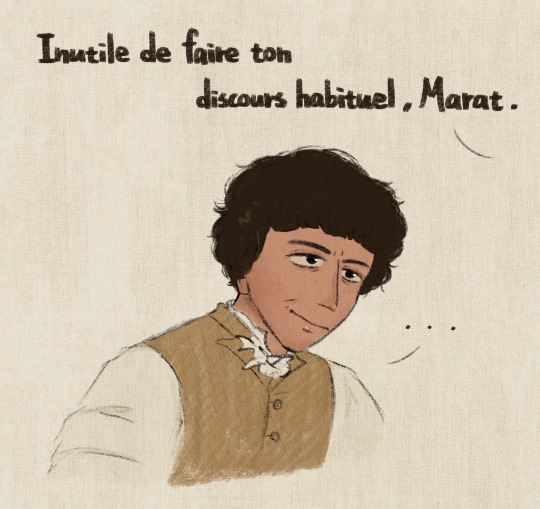
“Cut out your usual speech, Marat.”
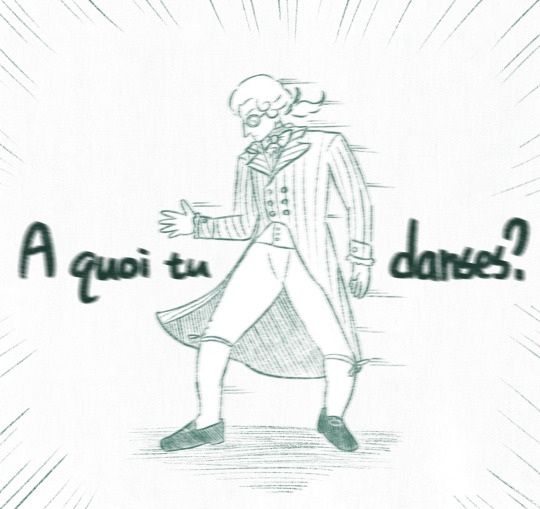
Why are u dancing?????
But Robespierre himself
(From “1789 - Les Amants de la Bastille”)
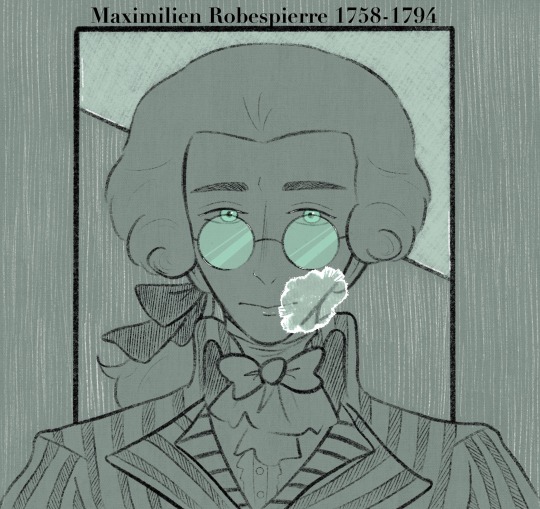
“the Incorruptible”
43 notes
·
View notes
Text
Reading the screenplay for Les Misérables (1917) by Frank Lloyd and Marc Robbins
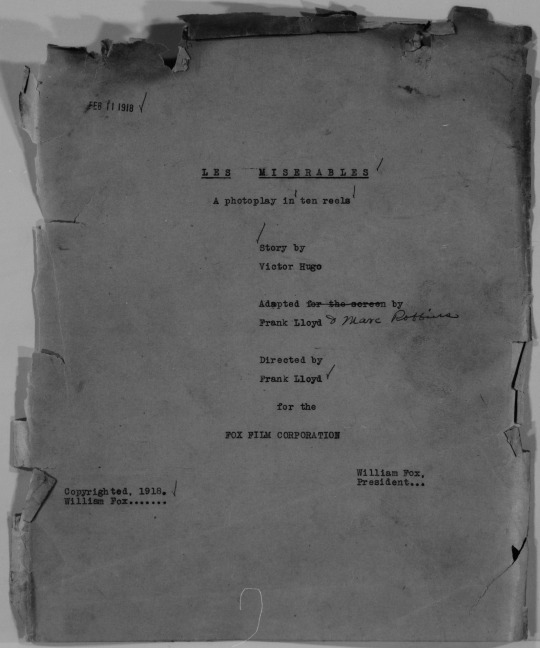
So the 1917 American film production of Les Miserables (starring William Farnum, directed by Frank Lloyd, and produced by William Fox) is not lost per se but it isn't readily available to watch either. According to @melancholyarchivist's research, a version is preserved by the Filmoteka Narodowa and can be viewed on-site (Is there anyone in Poland who's interested in visiting?) and we may some day get a restored version. In the meantime, I found that (most of) the screenplay is available through the Library of Congress, where it was submitted as part of the studio's copyright claim. I will tell you straight away that it itsn't complete. It ends right at the story's climax, which was incredibly frustrating to me but there's still lots of cool info. Here were some high/low lights for me: The film begins with a forward displayed through intertitle cards:
1. In the realm of prose Victor Hugo’s immortal classic shows that if sin dims the Divine Image, conscience disturbs the soul with sore discontent. 2. We see how God uses conscience to waken a dead soul and “plague the sinful man with dark despair,” until the conscience, that first made a coward of a bad man, at last makes a hero, of a good man. 3. In “Les Miserables,” Victor Hugo portrays the worst man as having a Diving Spark that no injustice can extinguish, which God guards and feeds, making it incorruptible in this life, and immortal in the next—SLOW FADE
That is not a great start but okay. Then we see Napoleonic soldiers walking triumphantly through the streets (the year is 1796.) Contrast this with scenes in Jean Valjean’s household, where children are fighting over a scrap of bread. Valjean sees the baker's window full of cakes and bread. He breaks the window and reaches over the cakes in order to take the bread. He is of course immediately caught, and the baker rejoices smugly. For context to this next part, an iris shot was a common technique in silent films where the camera’s “eye” opens and closes to direct the viewer's attention. (Also I have added punctuation to a lot of these quotes to make them more readable.)
SLOW IRIS in on loaf of bread on Judge’s bench. Open full on Judge, looking off and talking sternly, pointing to loaf of bread
This makes it sound like the bread is on trial. The bread on display in the courtroom is present in the 1935 American film production as well and like in the '35 production, 1917 has Jean Valjean dragged out of the courtroom while dramatically reaching for his sister. In Toulon, we see Javert as a prison guard. Although Valjean is repeatedly referred to as a "galley slave," he is not shown working on a ship (as he will be in the '35 film). He demonstrates his strength by saving a prisoner in a quarry. There is a lengthy scene of Jean Valjean attempting to escape prison (which was eventually cut down according to what I've read. Notice how the title page says "a film in 10 reels." It was later cut to 8.) Jean Valjean strangles a guard to death. Bloodhounds chase him across a marsh. When Valjean is released from prison, instead of being chased by the dog out of the dog house, there is a scene where Jean Valjean asks a man for food. The man refuses but Jean Valjean then sees him give his dog steak. He exclaims “I am denied food–when even dogs are fed.” A nun directs Valjean to the Bishop's. After the classic Bishop's Candlesticks sequence, we do see Valjean steal from Petit Gervais. Cut to the bishop praying in front of his empty cupboard. Then cut back to Jean Valjean, who sees the coin. Cut to the bishop. Back to Jean Valjean. Jean Valjean has a vision of himself: beside him fades in images of him as a prisoner, which are slowly replaced by a vision of the Bishop surrounded by light and looking at him sadly. The police are looking for Valjean but they don’t see him because he is on the ground sobbing. Then he goes to the Bishop’s house and prays outside it. There is a very sad scene of Fantine leaving Cosette with the Thenardiers but this scene was later cut. After Fantine is fired, an “old hag” tells her “Why should you starve when you are still young enough to attract men?” (This intertitle was cut by the Chicago board of censors.) In horror, Fantine holds up her hair and has a vision of Cosette as a baby, which dissolves into the hair. We see Fantine go to the hairdresser to sell her hair. Immediately after this she encounters the Bamatabois character and remembers what the old woman told her (that intertitle was also cut by the Chicago board of censors). She smiles at him, and touches his arm, and he pushes her into the gutter, telling her it is where she belongs. When Javert arrests her, the money she got for selling her hair is left behind in the gutter. Meanwhile, we see Valjean coming into the homes of poor families to give them money. He arrives in time to see Fantine's arrest and orders that she be freed, leading to this direction:

Very dramatic. I'll try to limit my use of screenshots though, since the typeface is a bit hard to read but one thing that's very charming and at times hilarious are the typos. See for example this scene where Javert tells Mayor Madeleine that he has denounced him:
Interior Madelein's room-- He writing at desk. Door opens. Housekkeper announces Javert. Javert enters. Stands looking at Madeleine. Housekeeper exits. Madeline turns around, asks Javery his business.
Even ignoring "Javery," they just spelled Madeleine three different ways.
Closeup Javert-- Her looking at Madeleine with resigned expression says: "I WISH TO TENDER MY RESIGNATION." Closeup Madeleine-- He looking at Javery in tense manner, suddenly controls himself, quietly says "Well."
As Jean Valjean decides what to do about Champmathieu's arrest, he sees visions of prison and of the bishop. When he arrives at the court in Arras, he is transfixed by the doorknob, which transforms into the face of prisoner 24601 (I thought that part sounded pretty cool). In the courtroom, no one believes that Madeleine is Jean Valjean. He addresses the prisoners and reveals that he knows Valjean's prison number. Then he lifts up his sleeve.
Closeup Madeleine left arm and shoulder. Letters T.F.P. and numbers 24601 is seen branded there
Of course, the musical would later do this but what other early adaptations show Jean Valjean with a brand? Fantine dies, Simplice lies to help Valjean escape (a fair amount of emphasis on Simplice actually.) We see Madame Thenardier send Cosette out to get water. In the woods, witches and ghouls haunt Cosette. Valjean buys her Catherine, shows the Thenardiers the letter from Fantine and gives them money in exchange for Cosette. Cut to 1832 (funny, this is basically just like how the musical abridgesthings). We get a birds eye view of Paris and the

Closeup Courfeynac-- He surrounded by men, who are eagerly questioning him. Marins enters. They greet one another in friendly manner. Courfeynac tells Marius he wants to speak with him. They exit from friends. Long Distance-- Men gathered in knots whispering as Courfeynac and Marins go to table, sit and start to talk. [...] Interior room at coffee house-- Marins on stall, addressing men in earnest manner. He finishes speech, is congratulated by Courfeynac and others. IRIS OUT.
Yes, Courfeyrac is called "Courfeynac" for half the script, until they switch to "Courferac" which isn't as bad. Marius is always "Marins," except once when he is called Marius and I swear that "Marius" is the typo. We also get a short scene of Gillenormand, who receives a letter from Marins saying that he won't accept his money. Meanwhile...
Long Distance Garden-- Cossette out of sight. Valjean enters, sees her gone. Registers surprise. Cossette creeps out behind him, startles him. He turns, sees her. They exit together.
It's not super egregious but Cosette is always called "Cossette." Marins leaves Courfeynac. Cossette and Valjean go to the park.
Long Distance-- Valjean and Cossette seated on bench Closeup Marins-- He looking off, registers fascination. Closeup Cossette-- She reading book, slowly raises eyes. Sees. Closeup Marins-- He looking toward her, fascinated.
He looks at her like she's a bug.
Long Distance-- Marins walks past Cossette and Valjean. He exits past camera. Closeup Cossette-- She peeping over top of book after book after Marins. Very interested. Pathway-- Marins going from camera, turns and suddenly walks back.
Freak behavior.
Long distance-- Valjean speaks to Cossette, who is shyly looking toward Marins. They both rise and exit past camera. Marins comes to bench, picks up Cossettes handkerchief, gazes after them, registers facination.
I don't think that there is any payoff to the handkerchief, it seems to really be Cossette's. Cut to the Thenardier's. There is no Azelma, Azelma is replaced by Gavroche (sometimes spelled Gavroch, Gavranche, Bavranche or Gavrouche.) Eponine comes to Marin's room and he gives her money. Then that very afternoon, Valjean comes to give the Thenardiers alms. Gavroche actively participates in his parent's schemes (he breaks the window with a rock, not his hand.) Thenardier recognizes Valjean and decides to rob him.
Outlet of Sewer-- Low barred arch gate in background, river seen beyond. Thenardier come to outside of gate, opens it with key, enters, close gate behind him as he comes to foreground toward camera. 4 men creep past camera and join him. He starts to whisper to them.
I love that Thenardier is meeting Patron-Minette (unnamed though) in the sewer and that they introduce his key here. Meanwhile, Marins goes to the police:
Police Headquarters-- Javert with back to camera, listening to Marins, who is telling of plot. Javert suddenly swings around, full face to camera. THE SUBLINE IRONY OF FATE. JAVERT NOW ATTACHED TO THE PARIS POLICE TAKES CHARGE OF THE CASE.
I bet that that reveal was awesome! Javery gives Marins a gun. Then Valjean arrives at the Thenardier's house and is forced to write a letter luring Cossette there. But before he can be made to give the address, he escapes and burns his arm. Marins fires the pistol and Javert arrives. Valjean then knocks over the candlesticks and escapes in the dark. He goes home and Cossette tends to his wound. Eponine and Gavroche see their parents arrested.
Closeup Eponine and Gavranche-- Gavranche turns to Eponine and says: SISTER DEAR - I AM GOING FAR FROM HERE.
Meanwhile Marins is distraught because he can't find Cossette
Interior Meeting Room, A.B.C.'s-- Room crowded with men. Marins seated alone at table. Courfeynac addressing men. Marins does not pay much attention.
Eponine finds Cossette's house and leads Marins there.
Exterior Valjeans house-- Eponine enters followed by Marins. She turns, points to garden gate. He joyfully starts toward gate. She stops him. He turns to her. She wistfully says: DO YOU LOVE HER? Back-- She finishes line. Marins nods yes, then eagerly exits to gate. Eponine looks after him and sighs. Garden at bench-- Cossette gazing out dreamily. Marins enters quietly behind her, stands looking at her with great love. She suddenly feels his presence, sees him, rises, stands staring at him. They look at one another. Marins registers great love, starts to speak to her. She turns away from him, registers great confusion and emotion. Close up Eponine-- She leaning against iron fence, registers dumb suffering.
Unlike in the book, where iirc Marius and Cosette embrace straight away and then never again until they are married, Marins and Cossette do not embrace as first but after many meetings, they embrace A LOT. One night Valjean looks out his window and he just sees them making out. Then Marins leaves. Cosette goes inside.
Interior living room (night)-- Cossette discovered arranging flowers in old fashion vase and lighting candles in happy manner. Valjean enters to her, stands looking at her in silent anguish. She turns, sees him, goes to him lovingly, asks him what's the matter. He quietly says: FOR REASONS WHICH I CANNOT EXPLAIN WE MUST LEAVE THIS HOUSE TONIGHT FOR ANOTHER I HAVE CHOSEN.
So yeah the reason they leave is because of Marins. Meanwhile, Javert gets a message:
Interior Police Headquarters-- Javert discovered writing. Gendarmine enters, hands him letter. He opens it, read INSPECTOR JAVERT A MALE PRISONER NAMED THENARDIER ESCAPED TONIGHT FROM THE LA FORCE PRISON. ACT ACCORDINGLY. LEBLANCC
This letter makes me laugh. MEANWHILE, Cossette is distraught at leaving. She sees Eponine (Marins had previously pointed out his friend Eponine) and gives her a letter for Marins.
Insert note-- DEAREST MARINS FOR SOME UNEXPLAINED REASON MY FATHER HAS SECRETLY TAKEN ME TO NO 7 DE L'HOMME WHICH IS TO BE OUT FUTURE HOME. COSSETTE
That also makes me laugh. Then a riot breaks out for no reason except that it is 5 June 1832.
Street near coffee house-- People seen hurriedly entering homes, all in state of alarm. Courfeynac at head of 35 men marching toward camera, old man and Gavranche at side of him. They all singing revolutionary songs.
Eponine is there in men's clothes and she gets the idea to give Marins (who has discovered that Cossette's house is empty) an anonymous note telling him to go to the barricade.
Long shot-- Shooting barricade in foreground, fight in progress. Red flag which is attached to pole at top of barricade suddenly falls, shot away. Old man grabs it, starts to climb to top of barricade. Close up top of barricade-- Old man starts to put flag back into place. Close up soldiers at end of street-- Officer gives command, they fire volley. Close up old man-- He trying to fix flag, suddenly his body sags, clutching flag, he falls. Long distance-- Old man falls from top of barricade to ground. Courferac goes to him. Close up Courferac andold man-- Courferac raises the dead body, registers strong emotion Close Up Marins-- He gazing off, exits toward Courferac Behind barricade-- Marins with Courferac laying dead man on matress, Marins has dead man's coat in hand, suddenly rises, calls off, raises hand, says: "LET THIS DEAD HERO'S COAT BE OUR FLAG."
They continue to fight the National Guard. Marins strikes a soldier senseless. Eponine gets shot, gives Marins the letter, and asks for a kiss. Marins kisses her. She dies. Then he writes a note to Cossette. Gavroche delivers the note to Valjean. Valjean is about to rip it up when he has a vision of the Bishop.
Sub title-- KNOWING THAT COSSETTE'S HAPPINESS DEPENDS ON MARIN'S SAFETY, VALJEAN GOES TO THE BARRICADE TO WATCH OVER HIM.
The next morning, the insurgents are still fighting:
Iris in on old man's coat-- Top of pole at barricade. Open full, showing long distance shot of street, men in barricade being served with coffee, fighting going on. Valjean in background, tending wounded.
Couferac tells them that they are going to run out of ammunition and Gavroche goes to get more. Valjean yells at him to come back. When Gavroche is shot and killed, Valjean retrieves the body and the ammunition.
Interior coffee house-- Courferac followed by Marins and Valjean leave body of Gavrouche. Courferac sees Javert and in terrible rage points to him and says: "YOUR FRIENDS MURDERED THAT BOY FOR WHICH CRIME YOU DIE."
I forgot to mention that Javert had been caught and tied up earlier. Marins is horrified but Courferac agrees. Valjean secretly lets Javert go. The barricade is attacked by cannons. Marins is shot. Valjean takes Marins and leaves. We see Courferac fighting terrifically. Shots of Valjean carrying Marins through the sewers are interspersed with shots of Courferac and others fighting. The insurgents retreat into the coffee house. The others die until only Courferac remains. He runs into another room, slamming the door behind him. The soldiers follow. The screenplay ends there! Don't you wish you could read the rest??! I feel certain that we were going to see Thenardier again, since he had escaped from prison, plus we saw him use that key. And I think we would have seen Gillenormand too. Also obviously Jean Valjean dies, but I read that his death scene got cut down in the final version.
45 notes
·
View notes
Text
En Argentina hubo un presidente que tuvo que vender su auto y terminó trabajando en una panadería. Le dieron un golpe de Estado. Casi nadie lo recuerda. Se ha dicho, con infinita inocencia, que la modestia del presidente José Mujica tal vez sea un ejemplo que marcará huella en las futuras generaciones de uruguayos. Sin embargo, hay malas noticias que llegan del pasado y de acá nomás. En Argentina –en donde los últimos presidentes han sido y son dueños de un millonario patrimonio- hubo un mandatario bastante más pobre que Mujica, cuya gestión fue más removedora que la del ex guerrillero tupamaro y el cual, pese a eso o tal vez precisamente por eso mismo, fue derrocado por un golpe de Estado del que no quedó afuera casi nadie. Y, lo peor, a treinta años de su muerte, su nombre ha ido a dar al panteón del casi olvido sin que su herencia de honestidad haya hecho demasiada huella en los estamentos políticos y sociales de su país. Se llamó Arturo Illia y fue elegido en su cargo como candidato de la Unión Cívica Radical (UCR) en las elecciones de 1963 luego de ejercer durante años como médico rural en el humilde pueblo cordobés de Cruz del Eje. La única propiedad que tuvo Illia en su vida fue una pequeña casa que, precisamente, gestionaron y ayudaron a pagar sus vecinos en agradecimiento a los servicios prestados. Fue el único presidente argentino que se negó a recibir una jubilación del Estado y sobrevivió hasta su muerte en 1983 trabajando en la panadería de un amigo. Durante su breve gestión, Argentina creció económicamente como nunca había crecido antes y el desempleo bajó del 8% al 4%. Illia creó el denominado “salario, mínimo, vital y móvil”, subió los sueldos sin provocar inflación y le dedico a la educación un porcentaje sin precedentes. Se enfrentó a las empresas petroleras, a las que impidió seguir llevándose la mayor parte de la explotación del crudo, y se tiró encima a los grandes laboratorios al ponerle tope al precio de los medicamentos. Además, la libertad de prensa era absoluta. Entonces, no solo los militares empezaron a conspirar contra su gobierno. También buena parte de los empresarios, de la Iglesia, de la prensa, de las asociaciones rurales y de los sindicatos dirigidos por el peronista Augusto Vandor. Decían que tenía un carácter débil; lo retrataban en los periódicos como si fuera una tortuga; golpeaban la puerta de la embajada de Estados Unidos; armaban aquelarres en los cuarteles. El semanario Primera Plana de Jacobo Timerman le hizo una entrevista a la esposa de Illia solo para mostrarla como una señora sin lustre y sin título, educada en un hogar humilde, sin ningún tipo de complejidad en sus razonamientos. Illia, mientras tanto, tuvo que vender su auto porque no quería usar los fondos del Estado para solventar los gastos que le imponía su cargo. El 28 de junio de 1966, el general Juan Carlos Onganía resolvió dar el golpe contra este veterano con fama bien ganada de incorruptible y de demócrata hasta las últimas consecuencias. Los militares se le vinieron encima en la Casa Rosada y un grupo de allegados tuvo que escoltarlo hasta la casa de su hermano en donde se quedó un tiempo hasta que volvió a Cruz del Eje. Poco y nada quedó del ejemplo de este médico rural tras su paso por la presidencia. La Argentina siguió penando mayormente entre dictaduras militares y gobiernos dudosamente peronistas. Por supuesto, los que luego entraron en la Casa Rosada no tenían problemas económicos y, si tenían alguno, lo resolvieron echando mano a la caja pública. Por eso, hoy que el mundo se asombra ante la modestia de un presidente uruguayo, no viene mal acordarse de este señor nacido en Pergamino que durante toda su vida –en el llano y en el poder- tuvo que trabajar para poder comer decentemente. En el video que se puede ver aquí arriba, Jairo –un cantautor argentino exquisito y también medio olvidado - lo recuerda de la mejor forma: brevemente y con alegría, fundiéndolo en medio de la gélida noche cordobesa, vestido de pijama y montado en una bicicleta luego de salvarle la vida a la hija de un obrero ferroviario.
El Observador - 25.02.13
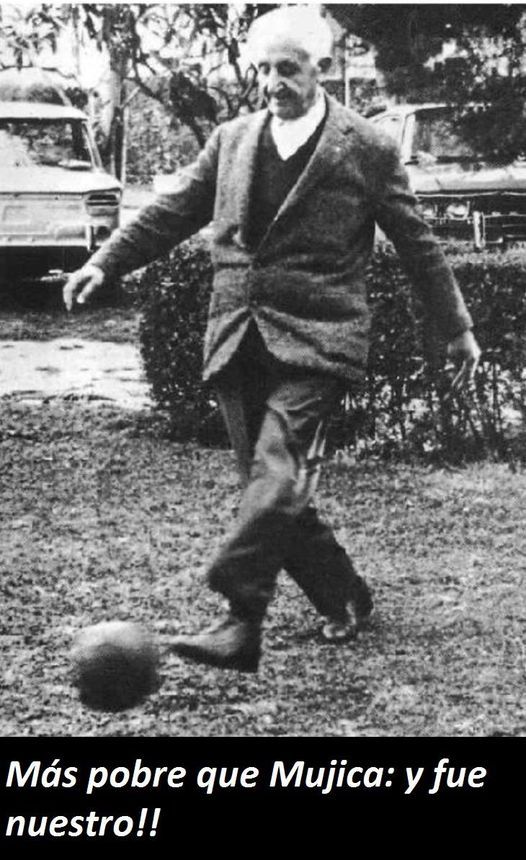
8 notes
·
View notes
Text
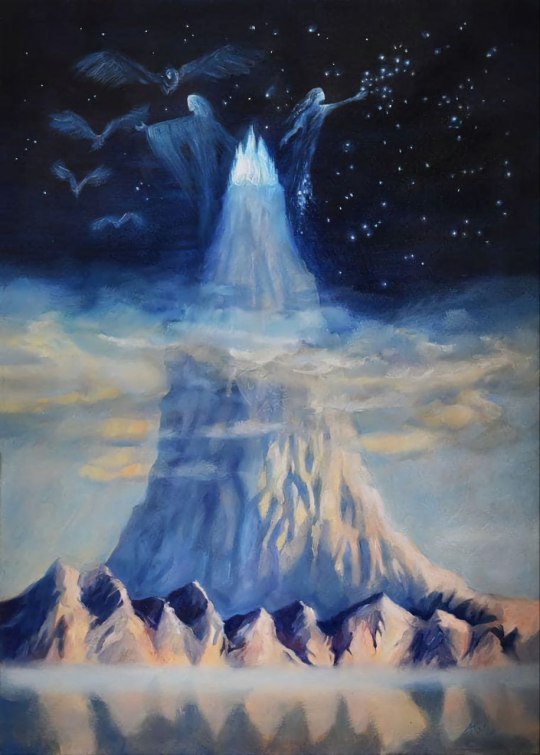
Dans l'« héroïsme tragique », dans ce sentiment de la vie tout à la fois sombre, déchaîné et sauvage, qui serait donc, selon certains, inhérent à l'âme nordique, il faut voir en fait des traces de tout ce qui a trait à l'écroulement d'une très ancienne civilisation. On sait combien certains, à partir de Wagner, ont divagué sur le « crépuscule des dieux ». Or, le vieux terme nordique ragna-rökkr doit en réalité être traduit – de façon moins romantique mais plus juste – par « obscurcissement du divin » (les « dieux » et le « crépuscule » ne sont que de simples images mythologisées). Il ne s'agit donc pas ici de se référer à la vision du monde spécifique d'une race ou d'une civilisation données, mais bien à des événements, à des faits qui rentrent dans le cadre historique et, en partie, dans le cadre cosmique, cadre envisagé par les anciens enseignements, que connut aussi l'Antiquité classique, relatifs aux quatre âges du monde (par exemple, l'âge du bronze et du fer chez Hésiode correspond à l'âge du « Loup » de la tradition nordique des Eddas). Mais il faut mettre en évidence ceci : au-delà de ces souvenirs, du caractère tragique et sauvage de ces faits, l'âme nordique, elle aussi, a connu une vérité plus haute.
Celui qui possède la préparation nécessaire reconnaît facilement que, dans la mythologie même des Eddas, l'essentiel ne correspond pas au pathos de l'apparition des forces élémentaires déchaînées et au combat contre elles, ni à certains détails des sagas qui se ressentent d'ailleurs de superstitions populaires et d'influences étrangères. L'essentiel, dans la tradition en question, se rapporte en revanche à des contenus fondamentalement « olympiens ». On rappellera, pour la démonstration, l'idée du Midgard, qui reflète la conception d'un centre suprême et d'un ordre profond du monde, et qu'on peut déjà considérer, d'une certaine manière, comme la base métaphysique de l'idée d'empire ; puis le symbolisme du Walhalla comme mont dont la cime glacée et brillante resplendit d'une éternelle clarté plus forte que toutes les nuées, sans oublier le thème de la Lumière du Nord sous ses nombreuses variantes.
On trouve en premier lieu le symbole du siège d'or de Gladsheim, « plus brillant que le soleil » ; le château royal d'Oegier, qui accueille les Ases et dans lequel l'or – symbole traditionnel de tout ce qui est incorruptible, royal et solaire – exprime la puissance d'une lumière ardente ; l'image de la demeure céleste de Gimlé, « plus belle que toute autre et plus resplendissante que le soleil », qui « subsistera même quand ciel et terre déclineront » – et ainsi de suite. Dans ces thèmes, et dans beaucoup d'autres, malgré leur caractère fragmentaire, un regard entraîné découvre obligatoirement le témoignage d'une dimension supérieure de la vieille mythologie nordique.
Et la conclusion suivante s'impose : tout comme l'homme de l'Antiquité classique, l'homme nordique et germanique a connu un ordre supérieur au monde du devenir et à une réalité tragique et élémentaire. Selon la Völuspá et le Gylfaginning, après le ragna-rökkr apparaissent un « nouveau soleil » et « une autre race » ; les « héros divins », les Ases, reviennent sur l'Idafels et retrouvent l'or qui symbolise la tradition primordiale de l'Asgard lumineux et l'état originel. Au-delà des brouillards de la « Forêt », règne donc une lumière plus pure. Il y a quelque chose de plus fort que le devenir et la destruction, que la tragédie et le feu, que le gel et la mort. Rappelons-nous les mots de Nietzsche : « Au-delà de la glace, du nord, de la mort – notre vie, notre joie ». Ceci est vraiment l'extrême profession de foi de l'homme nordique, une profession de foi qu'on peut qualifier, en dernière analyse, d'olympienne et de classique.
Julius Evola, L'Arc et la Massue
5 notes
·
View notes
Text
Nicknames of French revolutionaries
I'm trying to fit in the nicknames of the French revolutionaries of 1789. So the post is not very serious. I'll add a few and I'll let you add some :)
Antoine Barnave: The Tiger Mirabeau:The Torch of Provence Camille Desmoulins:The Man of July 14 Antoine François Momoro: The First Printer of National Liberty(nickname that he gave himself, I must admit ^^) Hébert:Took back his nickname Père Duchesne Anacharsis Cloots: The orator of mankind (a nickname he also gave himself) Robespierre Maximilien:The Incorruptible Lazare Carnot: The Organizer of the Victory Antonelle Pierre-Antoine:The Invariable René François Lebois: According to Bernard Gainot's research, this neo-Jacon was considered "Le Nouvel ami du peuple " printer of Bernard Medge's pamphlet "Dialogue between a representative of the people and a former administrator of the department" This one to partly clash with the following character, I admit, Sieyes- the obscure metaphysician
18 notes
·
View notes